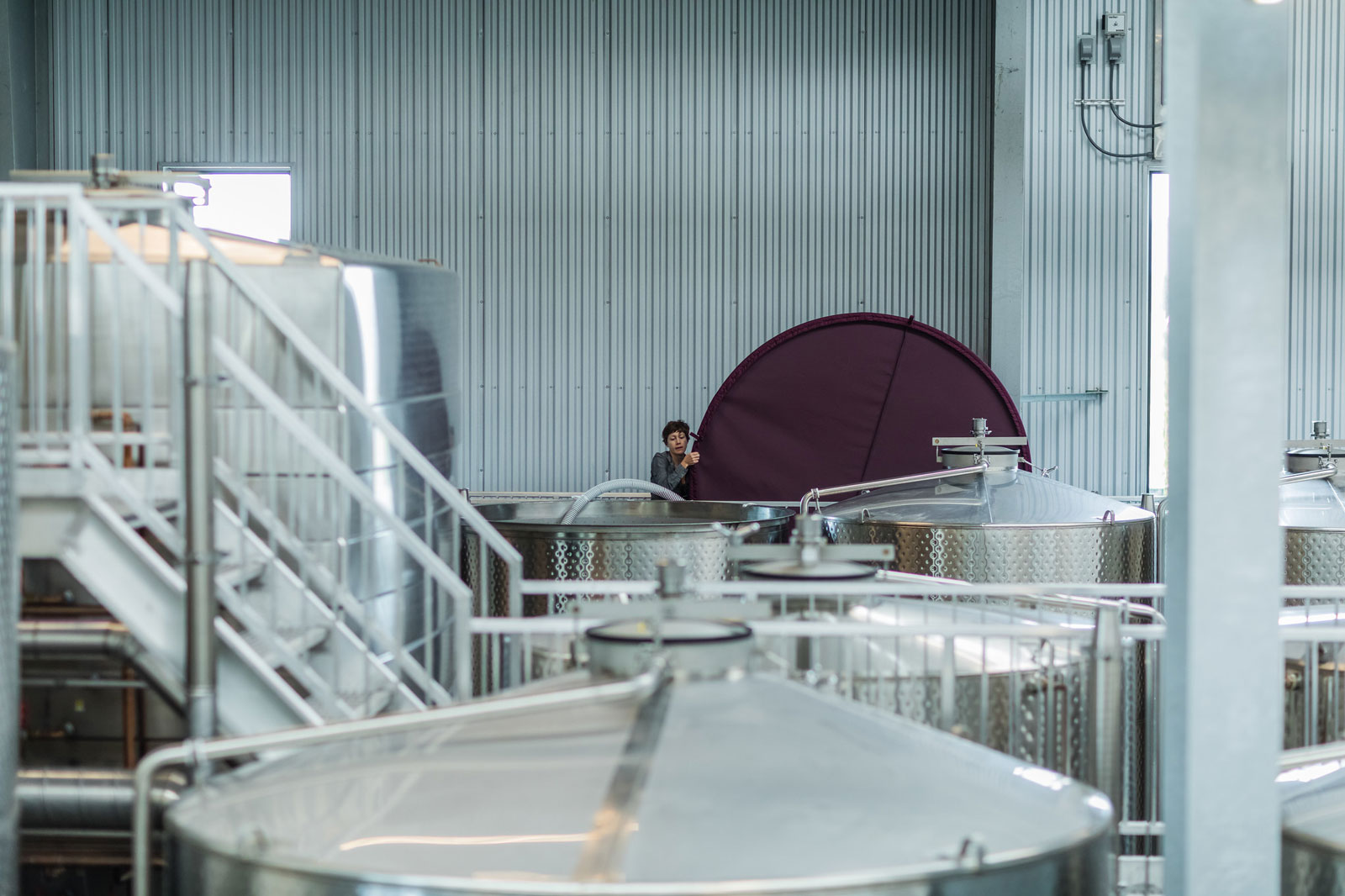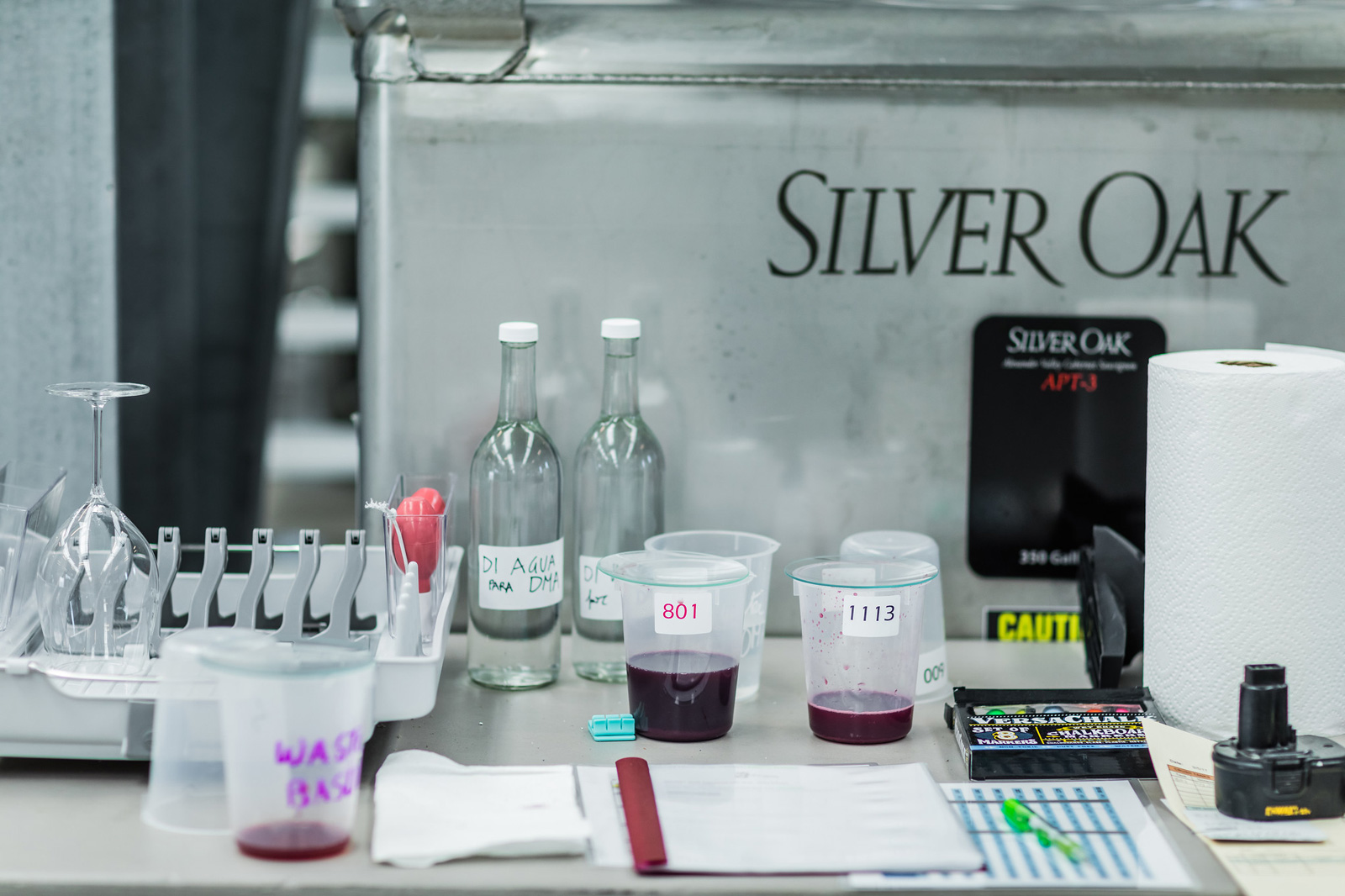Inside Silver Oak’s New, State-of-the-Art Winery, Alexander Valley
A green, pristine Sonoma facility worthy of the prestigious name it supports

For many red wine lovers, Silver Oak has become synonymous with luxuriant bottles of Cabernet Sauvignon over the last 45 years. These food-friendly, dynamic vintages hail from quality fruit met with virgin oak. Often, Silver Oak wines are consumed on special occasions—a reflection of their magnificence. But to truly understand what sets the brand apart requires a visit. Right now, two facilities welcome guests. There’s Silver Oak Cellars in Oakville, CA—the prestigious Napa Valley facility and visitors center. And then there’s the temporary Alexander Valley home at sister winery Twomey Healdsburg, atop a hill with stunning views of the vineyards in Sonoma. We took time to visit both, trying dozens of Silver Oak and Twomey wines along the way. And then, we got an early peek at Silver Oak’s sustainable new Alexander Valley home, opening soon. Suffice it to say, this is a winery fit for the future.

Even before entering, one gets the agricultural influence on the winery structure itself. It looks like a barn from the future. Lead architect Daniel Piechota, from Sagan Piechota, explains to CH, “A barn is meant to be a straightforward structure. The choice became striking a balance between being very intentional and novel versus straightforward yet laying back.” With nothing short of a poetic observation, Piechota continues, “The barns of the Alexander Valley have always held a fascination for me. I have spent a lot of time in rural areas and appreciate the modernism of barns—their form is their utility is their decoration. Barns are honest, the scale allows for deep openings and long shadows, light as it filters through tall boards. The long stretch and linear relationship to landscape, they convey an almost monolithic quality.” This isn’t a modern barn, however; it’s a winery and this is visually understood almost immediately.

“Wine comes from a specific place and has unique characteristics that reflect that particular place in that particular moment in time,” he continues. “I don’t think you need to be a wine lover to design a winery. However, it certainly greased the wheels as far as jumping into it feet first. One is naturally more creative when it ignites a personal passion.” Ultimately, he says, “My interest in wine isn’t just in the taste; it’s in the creation of it—the process, earth, equipment and facilities, the choices that are made along the way.”

A dive beneath the surface reveals something quite extraordinary. The new facility is seeking to be the world’s second LEED-platinum certified winery—the first being Silver Oak’s Oakville location. There’s no higher Leadership in Energy and Environmental Design classification. And this property will be the first winery to be 100% net zero energy and net zero water from the start. Every drop of water has been downcycled three times. Natural light illuminates production rooms. From the solar panels, they will ultimately draw 105% net energy, putting five percent back into the grid. They’re doing all this with an open-source approach. As Ian Leggat, Director of Marketing & Public Relations, says, “we are handing this over as a set of best practices in the industry and anybody who wants to use what we’ve done and do better can go ahead and do so. Everyone benefits.” From redwood reclaimed from another winery to recycled Levi’s used as insulation, nothing has been built without the utmost concern.

The brand has already set into action tech-forward vineyard management. They practice a system that causes the vines to struggle some for their water and nutrients. As Leggat explains, “this creates smaller more flavorful and concentrated fruit. If vines get too much water they take on a vegetal quality.” Then they seek out optimal ripeness and crush it as soon as possible. Other tests include predawn leaf pressure deficits, real time data transmission, and Physiocap measurement (lasers measuring width and shoot length) all to balance vigor and vine health for an even crop. They’ve also begun to use a machine harvester that shakes the bunches—a once controversial now tried and true system.

When Silver Oak launched in 1972, they were only the second all Cabernet Sauvignon house in the region. They were using roughly 25% estate grapes and 75% partner grower grapes. That number has flipped completely. The remarkably speck-free production area features a range of fermenters, each used only once during harvest. There are different tank sizes for different types of results. Nate Weis, only the third winemaker at the company, studied at UC Davis. His knowledge of the plants is extraordinary. From marine fog management to complete control over barrel-making (Silver Oak owns their cooperage), there aren’t many as equipped to produce with such specificity. Finally, the Silver Oak team blends before they put the wine into barrels. This allows the various components to harmonize, marry in fact, over that time.
Look no further than their acclaimed 2013 Alexander Valley Cabernet Sauvignon for proof of success.

Beyond the “barn,” atop a portion of benchland slope that Alexander Valley is known for, a tasting room is currently nearing completion. It offers a view across every point of the property—all 113-acres, 78 of which house Cabernet that will be nothing less than the future of the wine brand. The Mayacamas Mountains rise in the distance. The brand aims to strike a casual elegance and comfortability, while also offering a glimpse at the winemaking process—80% of which takes place in the vineyards. Anyone who loves these wines will gain from a visit. Anyone who’s looking to find a Cabernet Sauvignon representative of the future, can do no wrong here.
Images courtesy of Damion Hamilton












